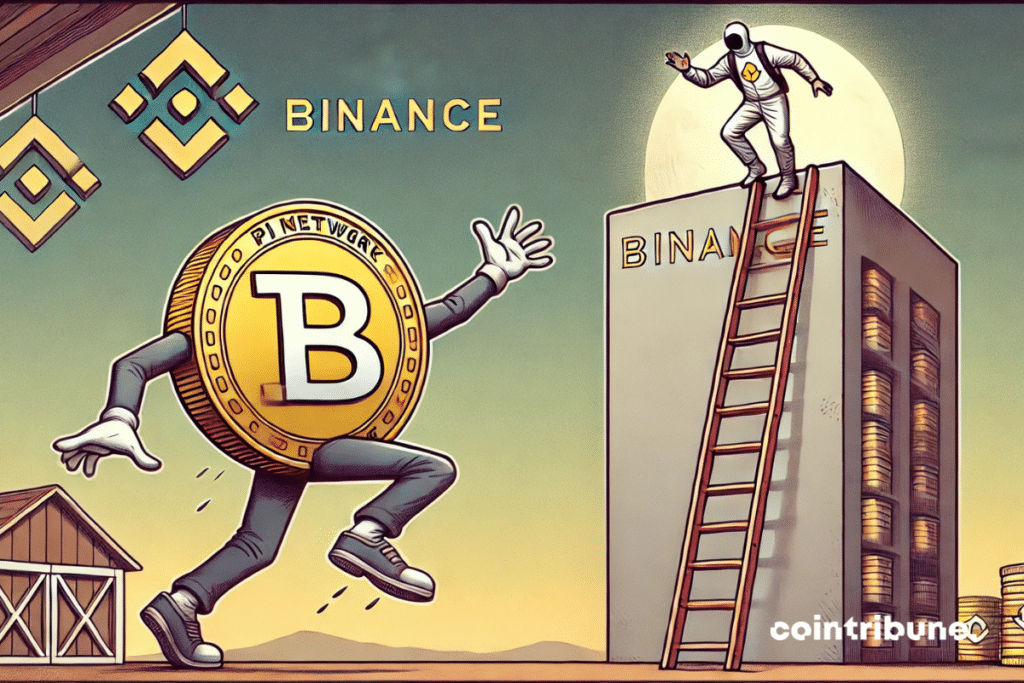Pi Network Downgraded By Binance: A Tough Blow For Crypto?
In the ruthless world of crypto, being listed on a platform like Binance can propel a project towards success. However, Pi Network faces a categorical refusal from the exchange giant, raising questions about its transparency and viability. This decision raises doubts about the project’s future and highlights the growing requirements of platforms in the face of new cryptos.

A refusal justified by concerns about decentralization
Binance officially announced that it would not list Pi Network. Indeed, the exchange cites reasons related to transparency and the current structure of the project.
The network continues to operate on testnet and has not yet launched its public mainnet, preventing users from freely transferring their tokens out of the internal ecosystem.
According to Binance, this situation presents a serious problem of decentralization and liquidity, essential criteria for being listed on a leading exchange platform.
The reasons put forth by Binance are based on several elements:
- Absence of public mainnet: Pi Network is still in the testing phase, which limits transactions and raises doubts about the project’s viability;
- Lack of transparency: the Pi Network team has not communicated a clear timeline for the official launch, fueling market distrust;
- Governance issues: the lack of clarity on network management and the centralization of the transaction validation process are major obstacles;
- Strict listing criteria: Binance requires a certain degree of compliance and security to integrate a crypto, elements that Pi Network does not yet seem to guarantee.
Beyond the technical aspects, Binance’s choice sends a strong message: without transparency or a solid infrastructure, a crypto project struggles to gain legitimacy.
In the absence of an operational mainnet and sufficient guarantees, the platform does not take the risk of integrating an asset whose viability remains uncertain.
What impact on price predictions and the community?
Binance’s refusal to list Pi Network has immediate repercussions on investor expectations and the evolution of the crypto price. Some analysts estimated that listing on Binance could propel Pi to new heights, with price predictions ranging between $1.99 and $73 by 2025.
But without access to major exchange platforms, the asset’s liquidity remains limited, reducing the prospects for adoption and valuation.
Despite this decision, the Pi Network community remains active and engaged. Many token holders hope that the launch of the public mainnet will reverse the trend and attract new support.
However, this implementation is slow to arrive, raising concerns about the project’s credibility. Moreover, the lack of clear communication on a specific launch date reinforces doubts and leaves uncertainty over the network’s future trajectory.
The rejection from Binance highlights the structural challenges that Pi Network must face to convince major platforms and, more broadly, the market. Indeed, the absence of a functional mainnet, doubts about governance, and lack of clarity on listing prospects hinder its adoption. If the project manages to resolve these issues, integration on major platforms could still be feasible, which would offer Pi holders a favorable outcome. Conversely, a prolonged delay or an inability to meet market requirements could relegate the crypto to a secondary role in an ecosystem where trust and transparency remain the keys to success.
Maximize your Cointribune experience with our "Read to Earn" program! For every article you read, earn points and access exclusive rewards. Sign up now and start earning benefits.

